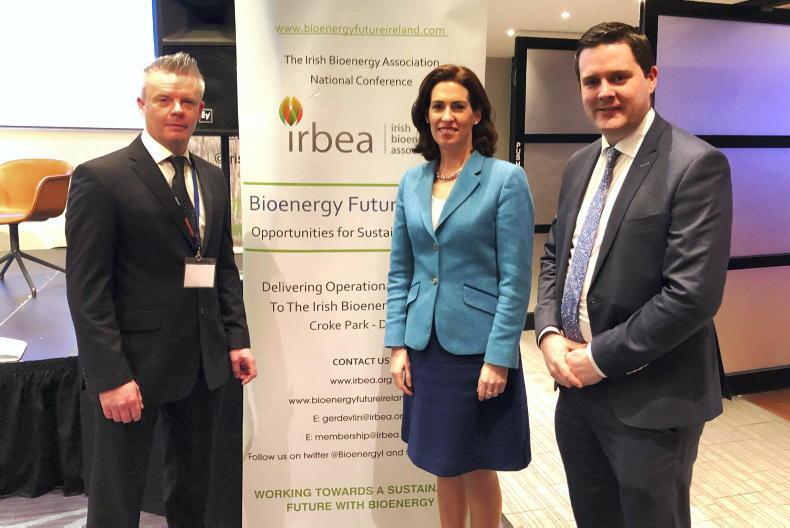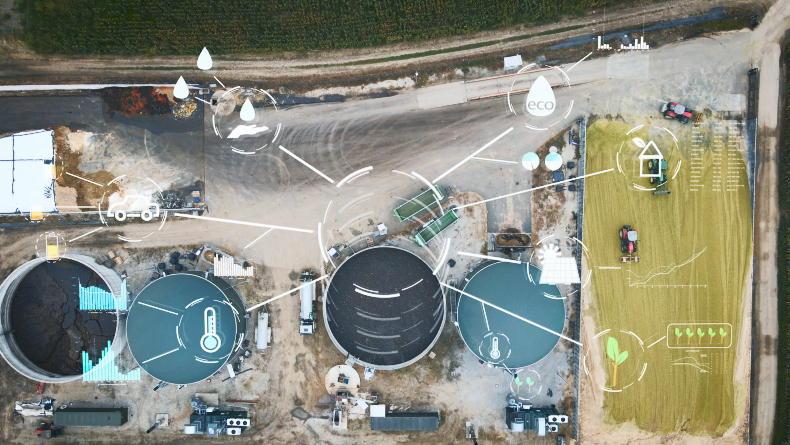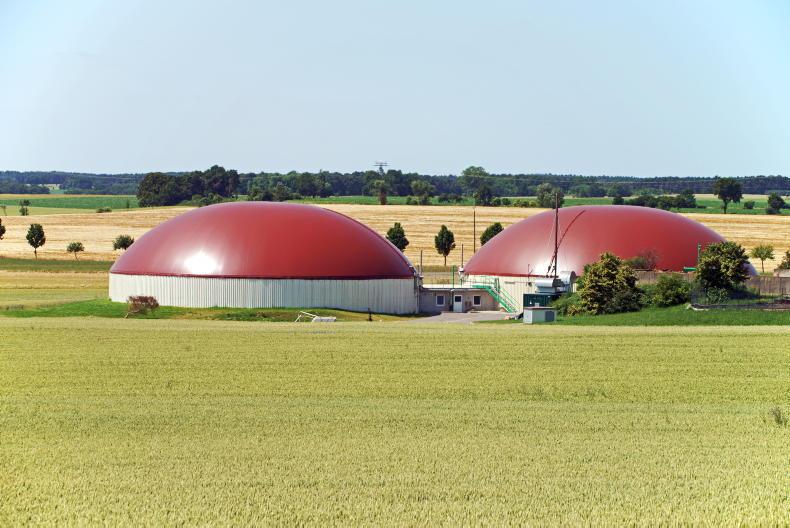To get a handle on what the bioenergy industry wants, the Irish Farmers Journal sat down with former Macra na Feirme president Seán Finan, who is CEO of the Irish Bioenergy Association (IrBEA), to see what is in the new roadmap.
JK: What is the Irish Bioenergy Association? Who funds it and what’s the role of the association?
SF: The IrBEA, established in 1999, is the representative association for the bioenergy industry on the island of Ireland covering the bioenergy sectors of biomass, biogas, biofuels, energy crops, wood fuels and biochar.
Our diverse membership includes farmers and foresters, fuel suppliers, energy development companies, equipment manufacturers and suppliers and anyone with an interest in the bioenergy industry. Our organisation is funded through member subscriptions, sponsorships and research and development projects.
What is the potential advantage of bioenergy to the farmer in financial terms and to the environment?
Bioenergy has the potential to utilise existing farm-based wastes, residues and crops for the production of energy in the forms of electricity, heat and transport fuel.
There is a role for farmers to supply feedstock (fuel for burning) or generate this energy themselves.
Bioenergy is renewable, indigenous and can present opportunities for on-farm diversification and rural employment. Bioenergy can offset the dependence on fossil fuels.
Example: 1ha of short-rotation coppice (willow) could displace an estimated 4,500 litres of kerosene per year. Grass silage and slurries from farmers could be used as a feedstock for biogas.
What’s the relationship between Renewable Energy Ireland (REI) and your organisation, the IrBEA?
REI was established in January 2019 as an open partnership of sustainable energy associations across all renewable technologies working collectively to support the energy transition in Ireland.
The shared vision is that, by 2050, Ireland will be energy independent through using indigenous, clean, carbon-free renewable energy supported by, and supporting, communities across our country. IrBEA is a founding member of REI.
What roadmap plan did REI release last week and is it achievable?
REI published 40by30, a roadmap to an Ireland where 40% of our heat can come from renewables by 2030. This is achievable and would reduce our CO2 emissions by 7% annually, in line with the climate action bill.
The plan clearly shows that 40% of Ireland’s heat can be provided by renewable sources, primarily from bioenergy, heat pumps, renewable gas and district heating networks.
There is no single solution to decarbonising our heating system but we can heat our homes, farms, schools, hospitals and businesses using a combination of several different heating technologies. It is achievable and can create approximately 23,000 jobs given the right Government support and policies.
If implemented, what benefit will it have on the environment?
It will reduce CO2 emissions by 48% in the heat sector, which account for one-fifth of Ireland’s total greenhouse gas emissions. It will reduces Ireland’s dependency on total energy imports from 50% to 34%.
A 40% target would create approximately 23,000 jobs, many of which would be in rural Ireland producing fuel and feedstock to serve demand.
The generation of feedstocks for renewable heat can contribute to the overall decarbonising of agriculture and provide alternatives for farmers.
The report identifies a large number of urgent policy interventions required from Government and industry to deliver 40by30. What are they and will these changes happen?
From a farming perspective, support needs to be made available for biogas production, growth of energy crops and confidence must be restored to achieve forestry planting targets to provide feedstock for solid biomass.
Existing support schemes such as the Support Scheme for Renewable Heat (SSRH) need to be further streamlined to reduce the administrative burden and encourage further uptake particularly among pig, poultry, horticulture and mushroom sectors to decarbonise the heat generation within these enterprises.
Is it fair to say that farmers are not big heat energy users but could take part in growing crops for this?
Certain intensive sectors such as pigs, poultry, horticulture and mushrooms have large heat demands. However, for the majority of farmers, growing energy crops, establishing forestry and provide feedstock for biogas present the biggest opportunity.
What other sectors of agriculture might be interested in this?
Pig, poultry, horticulture and mushroom sectors have large heat demands so would be interested.
Industry and dairy co-operatives are interested in decarbonisng their production systems through sustainable bioenergy and long-term renewable energy solutions.
Lower-income sector farmers may be interested in diversifying their enterprise into feedstock production.
If you were a farmer interested in this as a business, what crop would you say has most potential – the growing of dedicated energy crops or short-rotation forestry?
Both have potential but it depends on land and soil type, farmer preference and proximity to the end user of energy. Short supply chains work best from an economic and environmental perspective.
A roadmap is fine and gives politicians food for thought but are the steps in place that can make the roadmap the reality?
The Government has set a target of a 51% reduction in greenhouse gases by 2030. If a 40% renewable heat target is enshrined, in Government policy this will assist the heat sector in achieving this target.
While achieving the heat sector target it will also assist in reducing emissions from agriculture through alternative farming practices and enterprises.










SHARING OPTIONS